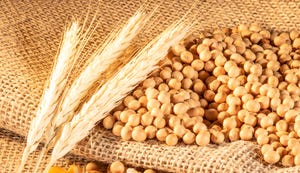
At a recent conference for agricultural bankers, participating students from the University of Illinois and Illinois State University compiled top questions from the bankers. One of these questions was challenging, but also particularly realistic in today’s economic culture. The question was, “When the breakeven point for corn is $3.95 per bushel, and $9.50 per bushel for soybeans, what do you do when commodity prices do not offer positive cash flow?” While this was focused on row crops, it currently applies to other sectors such as dairy as well.
In this situation, my first suggestion to these bankers was to require their customers to provide accurate, up-to-date, financial records such as balance sheets, cash flows, and income statements. In order to determine what to do, one must have an accurate account of the situation.
Next, one needs to assess numbers from recent years, particularly after 2012, to determine if this is a trend or if the breakeven point is fluctuating (increasing or decreasing). In some cases, producers are postponing critical decisions on land rent, input costs, and even marketing decisions with the hope of an adverse event in another production area to boost commodity prices. While this event is possible, it is also unlikely in a world flush with a surplus supply of commodities.
Another point for these bankers to consider is the customer’s willingness to make changes. Is the producer willing to work side-by-side with the lender to discuss possible options to lower the breakeven point? For instance, a young producer from West Tennessee reduced his rental acreage by 3,000 acres and started measuring profits by field. This producer also reduced family living withdrawals by $38,000 per year. These adjustments decreased his breakeven point by nearly $0.60 per bushel for corn and over $1.00 per bushel of soybeans. Of course, the producer’s willingness must be not only to plan, but to execute and monitor changes as well, which are both extremely critical steps.
When there is a loss in profits or negative margins, one needs to examine the balance sheet resiliency as measured through working capital and core equity in land. To measure working capital burn rate, one needs to estimate bottom line net losses, including all withdrawals such as family living, debt servicing, and taxes. Then, divide the resulting figure into working capital (current assets minus current liabilities). For example, if the working capital was $400,000, and losses were $200,000, a burn rate of two years is determined. At this rate of losses, it would take the business two years to burn through their working capital reserve.
For many, excess working capital is not an option because there is no excess. In this case, one needs to determine the burn rate on core land equity. If the land had a value of $2 million and the advance rate was 70 percent, the maximum amount a lender would extend would be $1.4 million. However, if the customer has $600,000 remaining on the land mortgage, the excess equity reserve would be $800,000. To calculate the burn rate, in this case, divide $800,000 by $200,000 in losses, to get a core equity burn rate of four years.
In today’s economic climate, the logic of these numbers can clearly lay out the reality of business finances. It also shows how higher breakeven points can erode the financial situation very quickly. As bankers and producers continue to navigate depressed commodity prices, it is important to take advantage of the factors within one’s control, like the breakeven point.
About the Author(s)
You May Also Like






